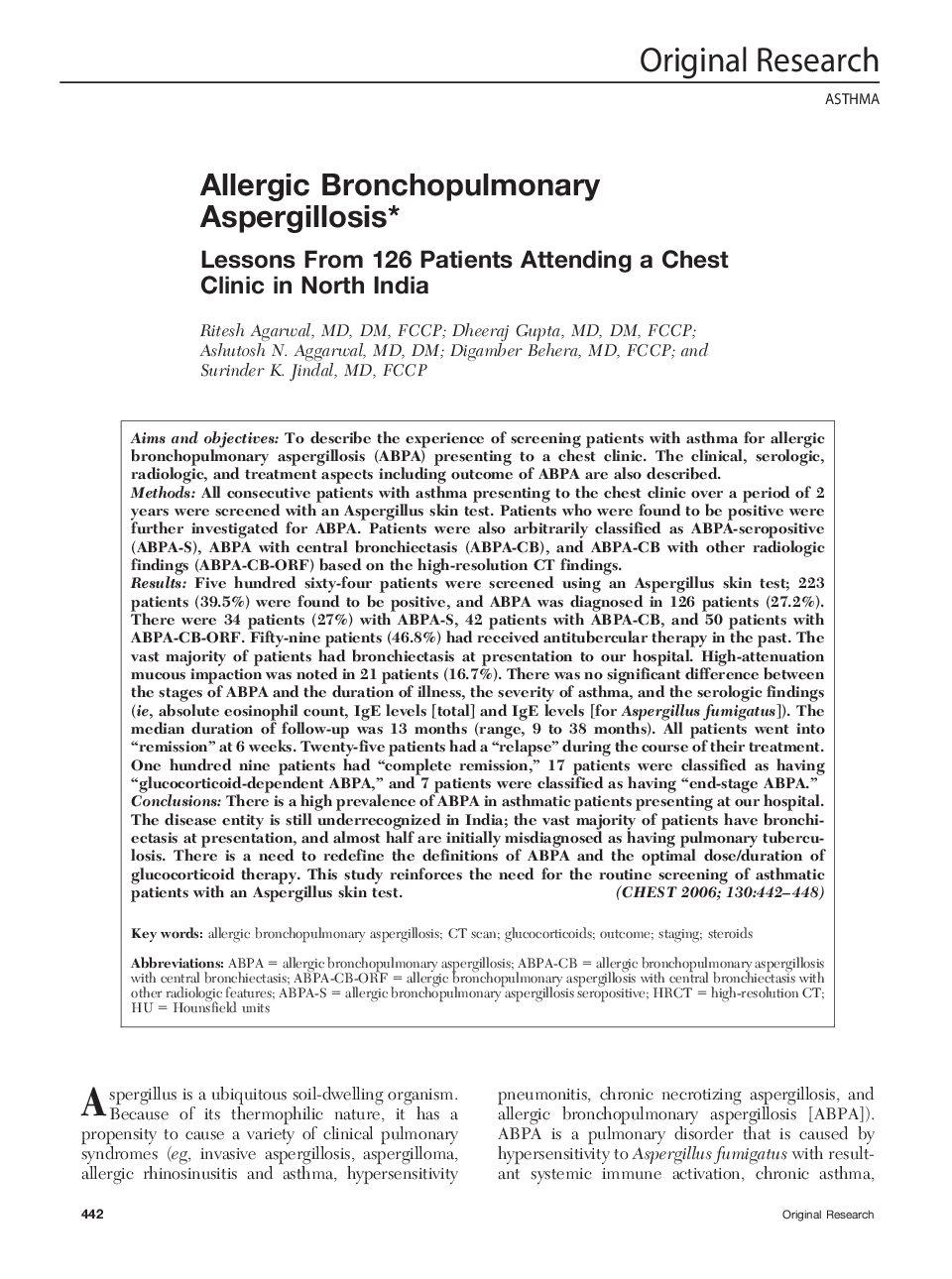| Article ID | Journal | Published Year | Pages | File Type |
|---|---|---|---|---|
| 2905645 | Chest | 2006 | 7 Pages |
Aims and objectivesTo describe the experience of screening patients with asthma for allergic bronchopulmonary aspergillosis (ABPA) presenting to a chest clinic. The clinical, serologic, radiologic, and treatment aspects including outcome of ABPA are also described.MethodsAll consecutive patients with asthma presenting to the chest clinic over a period of 2 years were screened with an Aspergillus skin test. Patients who were found to be positive were further investigated for ABPA. Patients were also arbitrarily classified as ABPA-seropositive (ABPA-S), ABPA with central bronchiectasis (ABPA-CB), and ABPA-CB with other radiologic findings (ABPA-CB-ORF) based on the high-resolution CT findings.ResultsFive hundred sixty-four patients were screened using an Aspergillus skin test; 223 patients (39.5%) were found to be positive, and ABPA was diagnosed in 126 patients (27.2%). There were 34 patients (27%) with ABPA-S, 42 patients with ABPA-CB, and 50 patients with ABPA-CB-ORF. Fifty-nine patients (46.8%) had received antitubercular therapy in the past. The vast majority of patients had bronchiectasis at presentation to our hospital. High-attenuation mucous impaction was noted in 21 patients (16.7%). There was no significant difference between the stages of ABPA and the duration of illness, the severity of asthma, and the serologic findings (ie, absolute eosinophil count, IgE levels [total] and IgE levels [for Aspergillus fumigatus]). The median duration of follow-up was 13 months (range, 9 to 38 months). All patients went into “remission” at 6 weeks. Twenty-five patients had a “relapse” during the course of their treatment. One hundred nine patients had “complete remission,” 17 patients were classified as having “glucocorticoid-dependent ABPA,” and 7 patients were classified as having “end-stage ABPA.”ConclusionsThere is a high prevalence of ABPA in asthmatic patients presenting at our hospital. The disease entity is still underrecognized in India; the vast majority of patients have bronchiectasis at presentation, and almost half are initially misdiagnosed as having pulmonary tuberculosis. There is a need to redefine the definitions of ABPA and the optimal dose/duration of glucocorticoid therapy. This study reinforces the need for the routine screening of asthmatic patients with an Aspergillus skin test.
